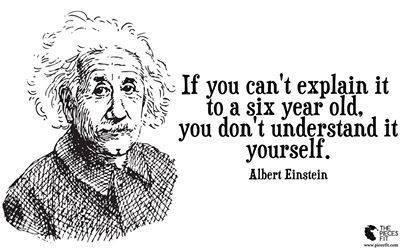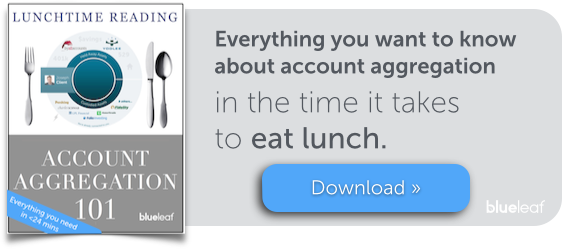Last Updated on July 20, 2020 by John Prendergast
Account aggregation. It was a daunting term the first time you saw it.
While most people in the industry are familiar with account aggregation technology at this point, you now face the challenge of explaining it to your clients.
You’ve invested in account aggregation, are excited about the capability to aggregate their accounts, and know it’s going to increase the level of service you provide (and rock their world), but how do you begin to explain it to them?
We have a strategy: Explain it like they’re six.
…Wait, what?

→ Looking to fully understanding it yourself? You can learn everything you need to know about Account Aggregation in the time it takes to eat lunch.
First, we’re not suggesting you speak to your clients like they’re 6 years old (that’d be patronizing). We’re simply suggesting you set about your explanation with a simple, friendly mindset.
Basically, “explain like I’m six” involves three things:
– Avoiding terminology
– Keeping it short
– Making it a conversation
Let’s dive in.
What is account aggregation?
The industry explanation:
Account aggregation is technology that brings account data together from many sources into a single place. The sources may include asset managers, banks, brokerages, insurance carriers or even credit card and mortgage companies.
For advisors, it eliminates the need to collect paper statements and manually key data into financial planning, performance reporting, CRM, client portals or other systems.
The data is typically collected daily and most often includes information on all positions in an account with their closing market values. The data will also typically include any account transaction activity. We say typically because update frequency can vary by vendor as well as data source (e.g. Fixed annuity values may only be updated monthly).
However, with custodial accounts, the technology can leverage the advisor’s access to pull in all client accounts at once. While not all vendors offer custodial data as well as held-away, those that do offer a powerful single place to consolidate all client data.
What’s a friendlier way to explain it?
Avoid terminology and keep it short. Explain account aggregation without using the actual term. Narrow in your focus to why aggregation matters to them. Try one of these:
“It provides a single spot to see all your accounts”
“You can pull all of your financial information into one place”
“Finally get your complete financial picture”
“Monitor all of your accounts and activity from a single login”
“Have access to view ALL of your financial activity, summarized on demand.”
Next: How does it work?
Account aggregation automatically collects financial information from accounts at different institutions – your custodian(s) and your clients’ held-away accounts – brings it to one place, and makes the information available to other systems.
Explain it through dialogue, and demonstrate it live.
Make the conversation a dialogue. Point out examples of other ways your client “aggregates” in their everyday life (such as X). Pause after a minute or two to avoid rambling, and just see how a client responds. Listen to their questions, provide direct answers, and ask them questions to gauge their understanding of the concept before you conclude the conversation.
With Blueleaf, the power of account aggregation is evident in their easy-to-navigate online client portal. If you have a tool like this handy, it’s incredibly powerful to demonstrate account aggregation while your client is logged into their portal, in the driver’s seat. A good place to start would be to demonstrate to them how to add an account to their own client portal.
“Explain Like I’m Five/Six” is actually a concept taken from Reddit. We wrote a blog post about Reddit a few weeks ago, which you can check out here.
